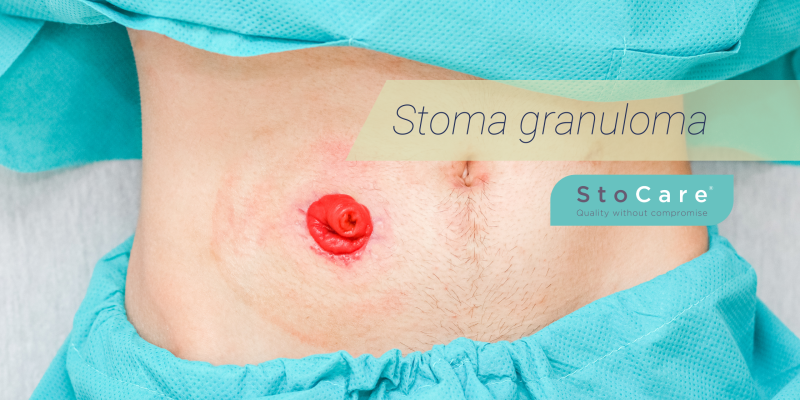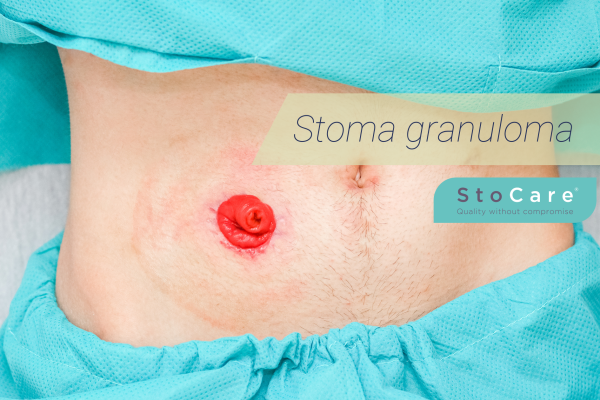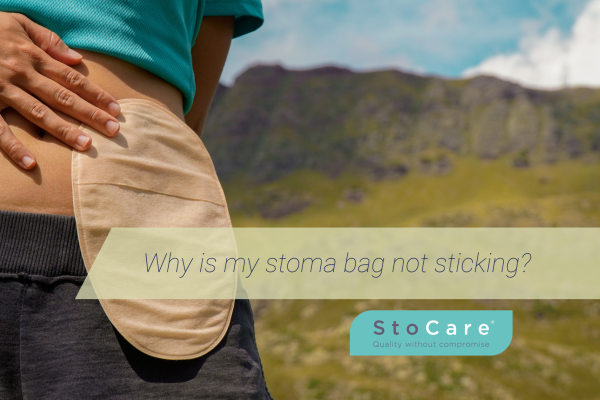Have you noticed a small red lump on your stoma that bleeds easily when touched? You may have a stoma granuloma. These benign tissue overgrowths are quite common among ostomates and, whilst they can be frustrating or even painful in extreme cases, they are treatable. Read our guide to stoma granulomas so you know what to look out for and what you should do about them.
What is a stoma granuloma?
Granulomas are benign overgrowths of tissue that can occur on or around a stoma. They look like small red lumps or warts. You might have just one or a few of different sizes. Anyone with a colostomy, ileostomy or urostomy can get them and they are quite common.
Stoma granulomas are fragile and often bleed to the touch, for example when you are cleaning your stoma. This might cause discomfort or pain. They may also stop your stoma pouch from adhering properly to your skin which can lead to leakage issues and further problems associated with this.
What causes a stoma granuloma?
Stoma output (faecal or urine) is corrosive. Ileostomy output contains digestive enzymes and is alkaline which can cause your skin’s condition to deteriorate especially quickly. As the output comes out of your stoma and into the bag, it comes into contact with the connection between your skin and your stoma (known medically as the mucocutaneous edge). This causes granulomas because the skin is working overtime to try and heal itself.
They can also be caused by irritation from your stoma bag, for example if it has not been fitted properly and is rubbing.

How to prevent stoma granuloma
There are a few steps you can take to reduce the risk of developing stoma granulomas:
- Cut your baseplate to the right size. There should be a very small (1-2mm) gap all around your stoma to prevent the baseplate from rubbing on the stoma. However, any larger of a gap and output will come into contact with the skin, causing irritation.
- Remeasure your stoma if needed. Ask your stoma nurse for help if you are unsure how to do this. Remember your stoma can naturally change size and shape for a variety of reasons, especially if it has been formed recently.
- Follow peristomal skincare guidance. Read our guide to peristomal skin protection to learn how to keep the skin around your stoma healthy.
- Try different products to protect your skin. Using a stoma seal or stoma paste can be an effective preventative measure for granulomas and help protect your peristomal skin from irritation by creating a stronger seal around your stoma. Your stoma nurse will be able to make tailored recommendations for you.

The Ostoform FLOWASSIST seal is one example of a stoma seal.
Stoma granuloma treatment
If you have spotted a stoma granuloma, you should report it to your stoma care nurse or another medical professional. There is a range of options they can use to treat the granuloma:
Silver nitrate
Silver nitrate is commonly used by stoma nurses to treat stoma granulomas. This has to be applied topically (to the skin) in a clinical setting because nurses require special training to be able to apply it. This is because it can damage healthy tissue and must only be applied to the granuloma.
Silver nitrate is applied to the granuloma for about 5 seconds and it ‘burns’ the granuloma in a very mild chemical reaction. It may sting slightly. This helps them to reduce in size, and over time, they should go away. You will have to revisit the nurse over a period of time for a cycle of treatment to take place, usually once a week for four weeks.
There are few cons to this treatment. Silver nitrate can stain clothes, so you may wish to wear old clothes to your appointment. It can also sometimes cause side effects if you have been overexposed to silver nitrate, although this is rare. Some people are allergic to silver nitrate. Report any side effects to your nurse.
Fludroxycortide tape
Another alternative option is Fludroxycortide tape. This is a particular type of surgical dressing which contains steroids to treat a range of skin conditions. You will need to be shown how to apply this by your stoma nurse.
Liquid nitrogen
In more severe cases, such as large, painful granulomas that bleed excessively, liquid nitrogen is also sometimes used. This is an extremely cold substance that has to be applied by a dermatologist.
Stoma granuloma removal
The granuloma may also need to be cut out surgically if the above treatments do not work. During this short procedure, the area around your stoma will be numbed using an anaesthetic injection. The skin may need to be cauterised afterwards to close the wound.

Will granulomas go away on their own?
No, stoma granulomas do not go away on their own. It’s important to contact a medical professional (such as your stoma nurse) as soon as you suspect you have a granuloma. This will allow treatment to eliminate the granuloma as soon as possible. This will prevent further problems that may occur as a result of the granuloma, such as leakage, further skin problems or pain. They will also want to check that it is indeed a granuloma and not a different medical condition.
Speak to your stoma nurse who will advise how you can reduce the likelihood of them coming back, such as how big you should cut your baseplate and product advice.
Conclusion
Always get in contact with your stoma nurse if you suspect you have a granuloma. Don’t wait for it to resolve on its own. With proper treatment and the right baseplate fitting, granulomas can be effectively managed and prevented from returning. Your stoma nurse is there to support you and ensure the granulomas don’t impact your quality of life.
Although all our articles are proofread by medical professionals, this information is for guidance only and does not replace advice given by your healthcare advisors.



